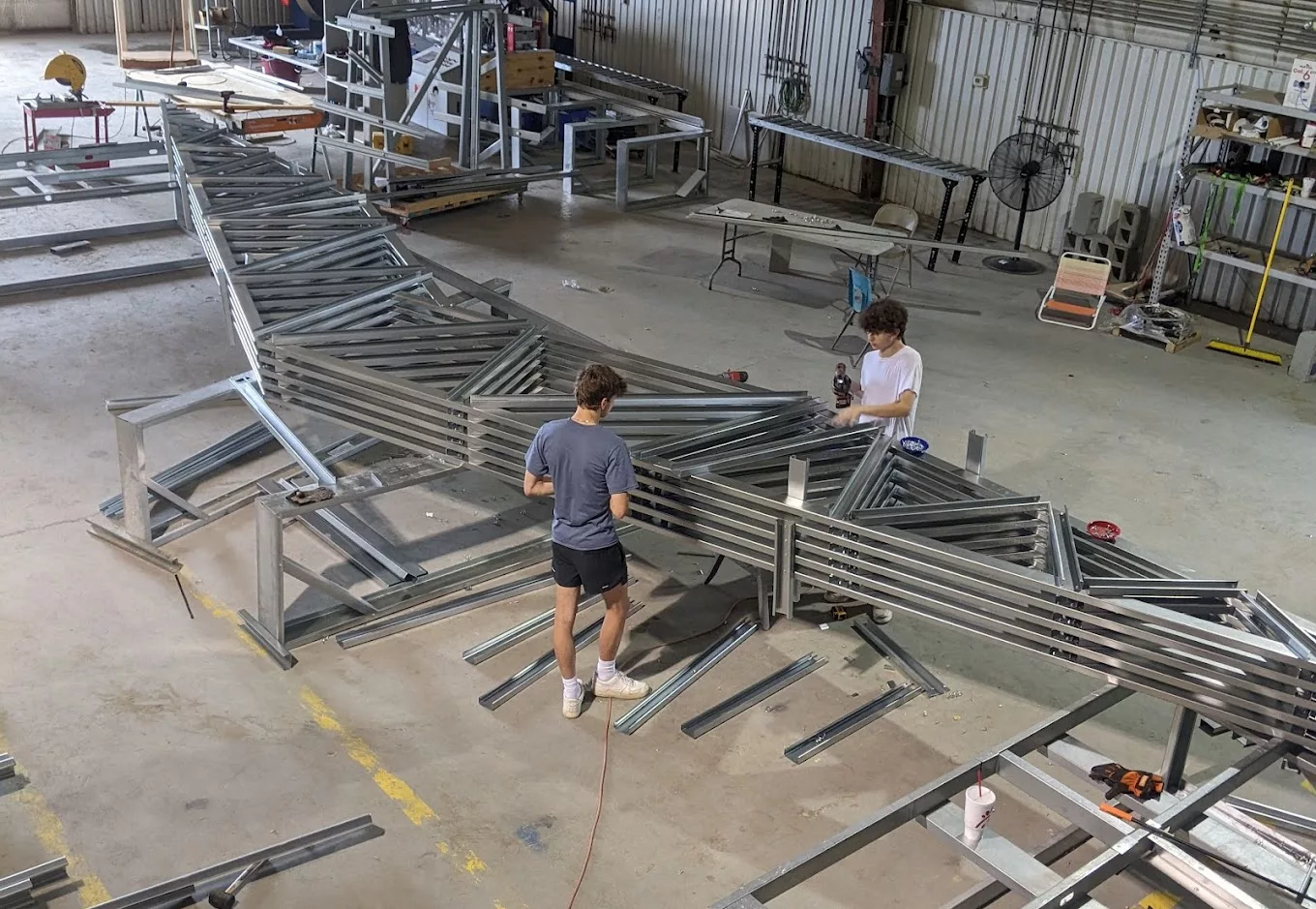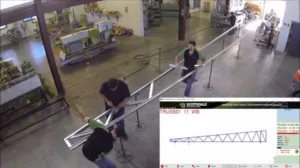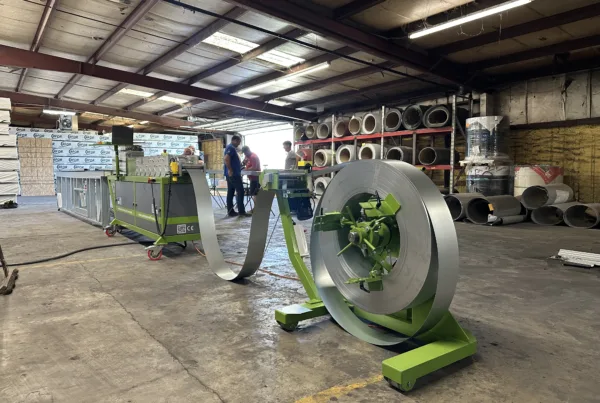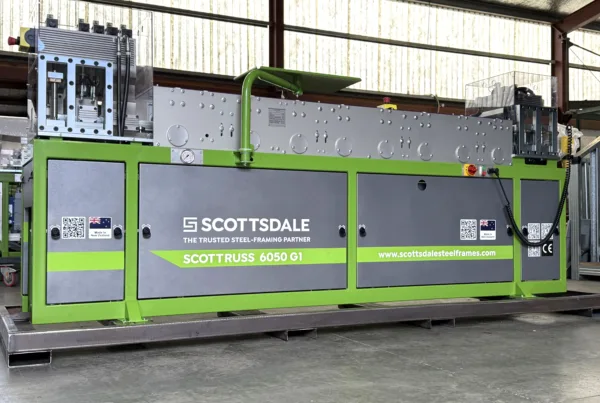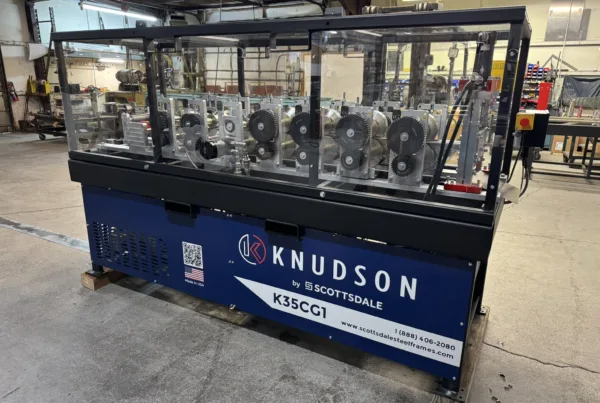The choice between cold-formed steel trusses and traditional steel joists has a significant impact on construction cost, speed, and structural performance. For decades, steel joists have been widely used in commercial and industrial projects, yet advances in roll forming of steel trusses and steel framing have introduced a lighter, faster, and more sustainable solution. By relying on cold-formed steel, builders and engineers can reduce self-weight, shorten lead times, achieve cost-effective customization, and improve the sustainability of their structures. This article explains the differences between traditional steel joists and cold-formed steel trusses, and highlights the major advantages of using roll forming technology in today’s construction market.
Understanding Traditional Steel Joists
Traditional steel joists are open-web members made from hot-rolled steel. They are most commonly used in industrial warehouses, large commercial projects, and large roof systems, where they provide reliable load-bearing capacity. The Steel Joist Institute (SJI) sets standardized profiles and specifications for these joists, which ensures consistency but also creates challenges when a project requires shapes, spans, and loads outside of the standard product offering.
Most steel joists are sourced from regional fabricators that work directly with steel mills. The supply chain for these members can be lengthy, and when custom joists are required, the average lead time often stretches beyond months. Custom fabrication is not only slow but also costly, since engineering hours and specialized millwork are needed to accommodate non-standard designs.
In addition to longer schedules and higher costs, traditional steel joists have significant self-weight. Their heavier profiles increase structural loads, which in turn can require larger foundations and stronger framing connections. While steel joists remain dependable for large-scale projects, their weight, cost, and limited flexibility make them less adaptable to modern fast-track construction methods.
What Are Cold-Formed Steel Trusses?
Cold-formed steel trusses are structural members fabricated from thin-gauge steel sheets that are shaped into C-sections, Hat-sections, or other profiles using roll forming machines and used in floor and roof applications. Unlike hot-rolled steel joists that require intensive mill processing, cold-formed members are shaped at roll forming facilities that can produce customized trusses directly from coils of steel.
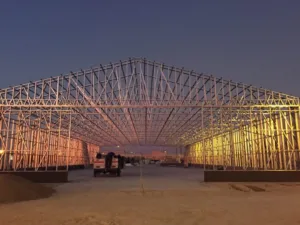
These cold-formed steel trusses are typically sourced from framing manufacturers or from companies that operate their own roll forming equipment. The production process is efficient, and lead times are much shorter than those of traditional steel joists. In many cases, cold-formed steel trusses can be manufactured in just days or weeks. This speed, combined with the flexibility of the manufacturing process, makes cold-formed steel trusses particularly attractive in today’s construction market.
Cost is another major differentiator. Because roll forming steel trusses require less energy and lighter handling equipment, they are generally more affordable to manufacture, deliver, and erect. Their self-weight is also significantly lighter than that of traditional joists, which not only simplifies transportation and installation but also reduces demands on the building’s foundation. For modular and prefabricated construction, where every pound matters, this lighter weight offers a clear advantage.
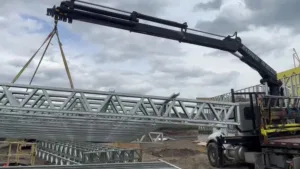
Advantages of Cold-Formed Steel Trusses over Steel Joists
The advantages of cold-formed steel trusses compared to traditional steel joists are evident in several areas. Their lighter weight makes cold-formed steel trusses easier to handle on site, reducing crane requirements and improving efficiency during installation. In projects where construction schedules are tight, the shorter lead times associated with roll forming steel trusses make it possible to begin assembly sooner and avoid costly delays.
Customization is another area where cold-formed trusses excel. A project that requires a special span or an unusual roof pitch would typically incur significant expense and time delays if hot-rolled joists were specified. With cold-formed members, those same requirements can be met quickly and cost-effectively through advanced roll forming technology. Modern engineering and testing have also proven that cold-formed steel trusses can achieve spans comparable to traditional hot-rolled steel joists when designed with either C-sections or Hat-sections, making them viable in commercial, industrial, institutional, and other large building applications.
Sustainability further enhances their value. Cold-formed steel is produced from thin sheet steel that is recyclable and efficiently utilized during manufacturing. Roll forming reduces material waste to less than one percent, whereas traditional fabrication methods for steel joists often generate more offcuts and inefficiencies. For builders seeking LEED points or looking to lower the embodied carbon of their projects, roll forming steel trusses present a more environmentally responsible solution.
When to Use Cold-Formed Steel Trusses vs. Steel Joists?
Traditional steel joists remain a good choice in mega-large projects where extremely heavy loads are required. They are still widely used in industrial warehouses, distribution centers, and facilities that rely on hot-rolled steel strength for very large spans, often over 100 ft.
Cold-formed steel trusses, however, are a better choice when shorter lead times are critical, when unique design requirements call for custom shapes and spans, or when reducing weight is an important consideration. They are especially well-suited for modular buildings, prefabricated construction, and projects where sustainability is a priority. By incorporating roll forming steel trusses into building systems, contractors gain both design flexibility and significant logistical advantages, without compromising on structural integrity.
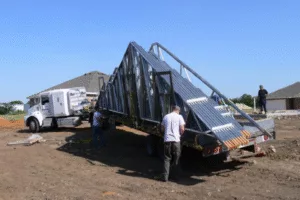
Fabricating Cold-Formed Steel Trusses with Scottsdale Roll Forming Technology
For residential projects, the ideal available solution is Scotpanel roll forming machines, delivering precision and efficiency in the manufacturing of cold-formed steel trusses and framing members for homes and low-rise buildings.
For mid-size projects such as commercial, industrial, and multi-story structures up to ten stories, Scottruss roll forming machines provide the strength, versatility, and reliability needed to produce high-performance roll forming steel trusses that can meet the performance of traditional steel joists.
For large projects requiring long spans and cost-effective solutions, the best solution is Knudson by Scottsdale KFS Framemaker roll forming machines, engineered to manufacture multi-profile advanced cold-formed steel trusses and steel framing components that deliver maximum efficiency, speed, and sustainability at scale.
Scottsdale Construction Systems has provided a study on “Cost Effectiveness of In-line C-Section and Hat-Section Cold-Formed Steel Trusses” and is available as a free resource on our Download page. Additional information on roll forming, steel framing, and cold-formed steel trusses can be found on our Knowledge Base platform.
Scottsdale Knowledge Base is a comprehensive repository of information, data, design aids, tools, expert advices, manuals, and many other resources on prefabricated steel framing.
Not only is it a powerful tool for any architect, engineer, contractor, framing shop, homebuilder, building material supplier, or anyone involved in cold-formed steel framing, it also enables seamless integration of Scottsdale’s industry-leading steel framing roll former equipment and technology into virtually any work flow. All licensed customers and ScotSteel subscribers receive complementary access to Knowledge Base. Become a member today of our ScotAI-assisted steel-framing information platform, and elevate your business!
A Smarter Path Forward with Cold-Formed Steel Trusses
While steel joists continue to play an important role in construction, the rise of cold-formed steel trusses reflects the industry’s move toward faster, lighter, and more sustainable solutions. Advances in roll forming have enabled manufacturers to produce roll forming steel trusses tailored to specific project needs, reducing waste and cutting costs. For modern projects that demand speed, efficiency, and environmental responsibility, cold-formed steel trusses are not simply an alternative to steel joists; they represent the future of steel framing.
Additional Scottsdale Roll Forming Solutions and Resources
- Blog – How to Achieve Better Spans With Cold-Formed Steel Trusses
- Blog – Strengthening of Hat-Section Trusses Under Heavy Loads
- Blog – Enhancing C-Section Trusses for Heavy Load Applications
- Blog – Best Steel Framing Results with Advanced Roll Forming Technology
- Blog – Remarkable Results in Steel Framing with Roll Forming Technology
- Download – Cost Effectiveness Comparison of In-line C-Section and Hat-Section Cold-Formed Steel Trusses
- Video – Steel Framing Fabrication Process with Scotpanel and Scottruss Roll Forming Technology
- Video – Cold-Formed Steel Truss Design, Engineering, Fabrication & Site Erection
- Video – Scottsdale Steel Truss Fabrication
- Financial Services
To learn more about Scottsdale’s roll forming solutions, visit us at www.scottsdalesteelframes.com, call us at +1 (888) 406-2080, or email us at rollformers@scottsdalesteelframes.info.
